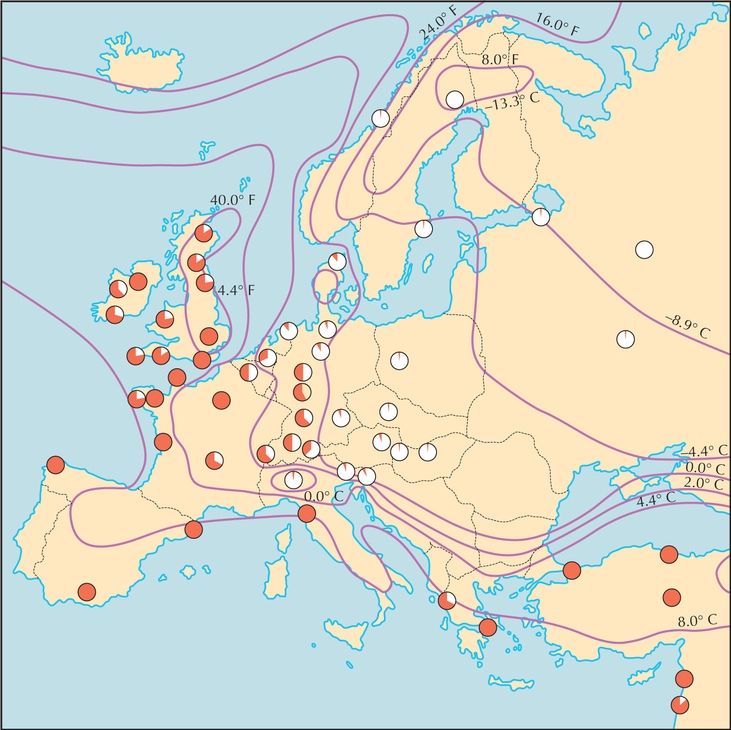 |
 |
|
|
|
Cyanogenesis in Clover

Figure WN18.4.
Clover (Trifolium repens) is polymorphic for the ability to produce cyanide. Cyanogenesis is a defense against herbivores, but it can be costly to the plant itself if frost damage causes the release of cyanide. Cyanogenesis therefore increases with mean January temperatures and follows a broad cline that runs parallel to mean January temperature isotherms (heavy lines). (Redrawn from Daday 1954, Fig. 2.)
|
|
|

